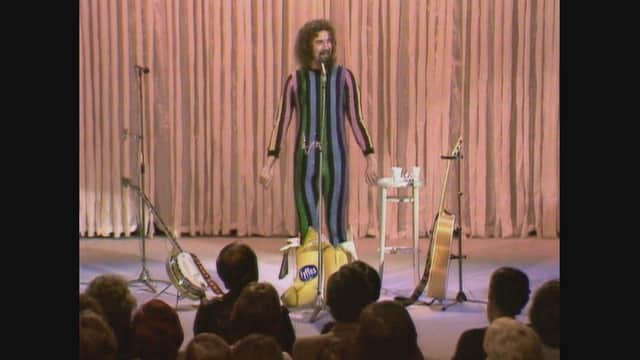Billy Connolly reveals how he became addicted to creating "weird" stage costumes which helped shoot him to fame


He tells a new television documentary series how he “lost control” and “went all androgynous” after deciding to make as much impact as possible with increasingly outlandish outfits.
However Connolly also reveals in the same programme how he suffered a “bad time” in his Clyde shipyard and had to endure jibes that he was gay due to his unusual taste in fashion.
Advertisement
Hide AdAdvertisement
Hide AdPart two of Billy and Us, which is being shown on Thursday night, sees Connolly compared to rock icon David Bowie for his unique costumes, some of which were inspired by the glam rock era.
Brought up in the Anderston, Partick and Drumchapel areas of Glasgow, Connolly delivered books and bread when he left school before securing an apprenticeship as a welder.
He developed an interest in folk music after meeting singer Danny Kyle in Clydebank and formd the band The Humblebums with Gerry Rafferty in 1965, before Connolly decided to forge a solo career in 1971, first as a singer and then as a comic.
Speaking about his early days as a performer, Connolly recalled: “I came upon the weird costumes by mistake. I was playing folk clubs.
“They were mostly in lounge bars up and down the length of Britain - it was brilliant.
“When you came in with your jeans and your denim shirt you were the same as the audience. They didn’t know who you were. Most of them didn’t know who they’d booked. You’d go up and say: ‘I’m the attraction.’
“I thought: ‘I’m going to dress so that when I walk in they will know how it is. I got stars on my trousers, then went for stripes and I just lost control after that and went all androgyny. A girl made me some costumes - velvet stuff with big hoods on it and huge flares. It was great dressing up.”
Advertisement
Hide AdAdvertisement
Hide AdCostume designer Roz Armstrong tells the documentary said: “Billy managed to create a Bowie-type figure without being androgynous. You absolutely knew he was a man - there was no doubt about that.
“It made him stand out so that he was attractive to both men and women without it being in a sexual way.
“That was quite different in those days - I think the only other one that managed it was David Bowie.”
The documentary sees Connolly recall the creation of his most famous costume, which was inspired by his hit musical The Great Northern Welly Boot Show, and designs created by the artist and playwright John Byrne.
Recalling the creation of one of his best-known costumes, Connolly added: “It was the time of glam rock. I wanted a kind of satiny, silky shiny suit with a diamond on my crotch so it twinkled and captured your attention all the time.
“But John Byrne had just done some drawings for The Great Northern Welly Boot Show. One of them was for the reggae wellie, which were bananas. They were fabulous and I had them made for me.
“In all the time I wore them I never talked about them. I only wore them for about 18 months or two years. I never, ever referred to them. I just did it.
Advertisement
Hide AdAdvertisement
Hide Ad“There’s a thing about changing into a costume which is good for your head. You’re no longer a welder - you’re a comedian now.
“In the shipyard, they gave me a bad time for it, calling me gay and all that, because I wore beads and long hair. But it went on and on and on and hasn’t really stopped yet.”
Comments
Want to join the conversation? Please or to comment on this article.